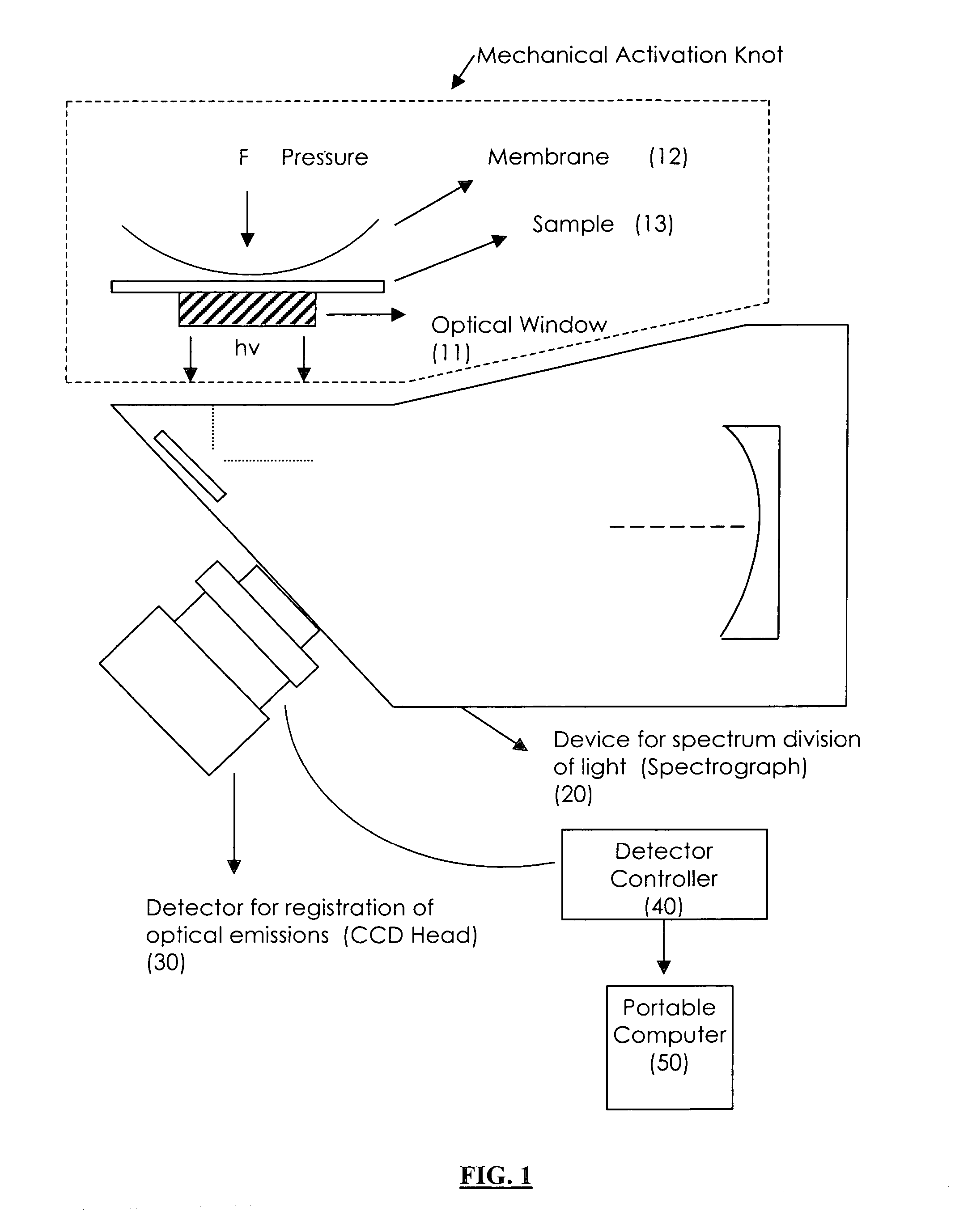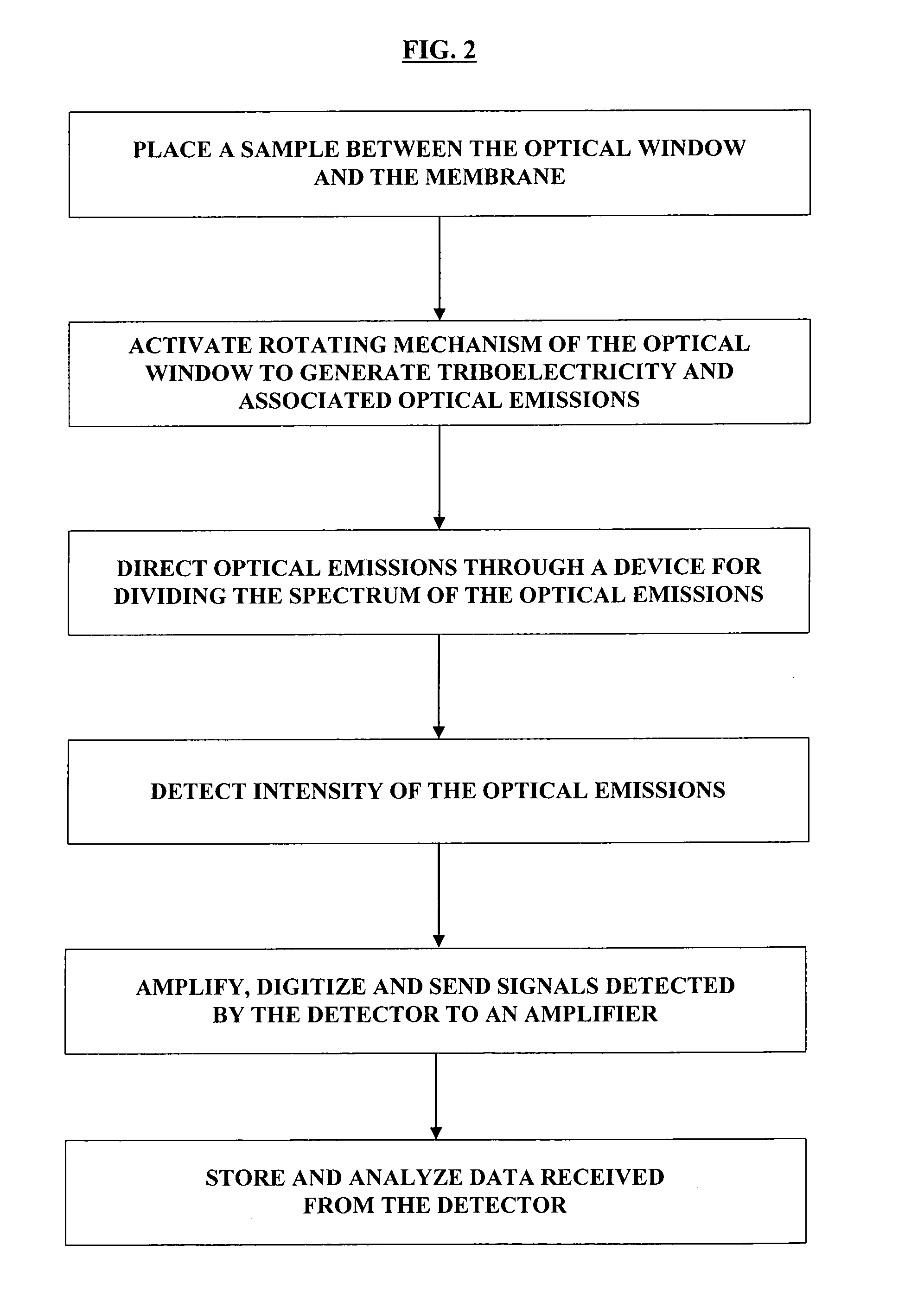Apparatus, method, and system for analyzing samples using triboluminescent technology
a triboluminescent and sample technology, applied in the field of apparatus, method and system for analyzing and identifying samples using triboluminescent technology, can solve the problems of inability to detect signals with low intensity and insignificant duration, inability to register and record low intensity signals, and limited usefulness of russian triboluminometers, etc., to achieve greater resolution
- Summary
- Abstract
- Description
- Claims
- Application Information
AI Technical Summary
Benefits of technology
Problems solved by technology
Method used
Image
Examples
example
[0041] The following illustrates one embodiment of the present invention. A working prototype of the present invention is currently available. It comprises: (i) a mechanical activation knot comprising a very thin optical window (0.5 mm) (11) made out of single crystal sapphire; (ii) a Spectrograph CP-140, manufactured and supplied by the ISA Company (US); (iii) a Mini Thermoelectrically Cooled CCD Head, manufactured and supplied by the ISA Co.; (iv) a Spectrum One Controller, manufactured and supplied by the ISA Co.; and (v) a portable computer, manufactured and supplied by Compaq. The prototype has an adjustable speed of activation of up to 5000 RPM. In the prototype, the force applied to a sample (13) is done with a rubber membrane (12) and the force can be adjusted from 0.5 to 2000 mm of Mercury (Hg).
[0042] The prototype operates between a range of temperature of 18° to 40° Celsius. Depending on the chemical composition of the sample (13) and the objectives of the experiment, ce...
PUM
| Property | Measurement | Unit |
|---|---|---|
| humidity | aaaaa | aaaaa |
| wavelengths | aaaaa | aaaaa |
| wavelengths | aaaaa | aaaaa |
Abstract
Description
Claims
Application Information
 Login to View More
Login to View More - R&D
- Intellectual Property
- Life Sciences
- Materials
- Tech Scout
- Unparalleled Data Quality
- Higher Quality Content
- 60% Fewer Hallucinations
Browse by: Latest US Patents, China's latest patents, Technical Efficacy Thesaurus, Application Domain, Technology Topic, Popular Technical Reports.
© 2025 PatSnap. All rights reserved.Legal|Privacy policy|Modern Slavery Act Transparency Statement|Sitemap|About US| Contact US: help@patsnap.com



